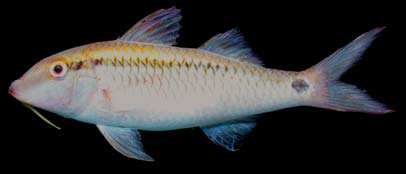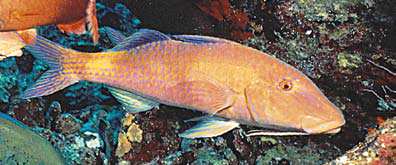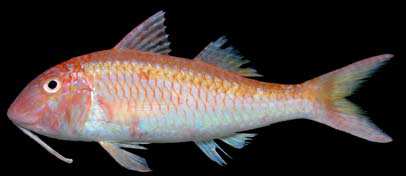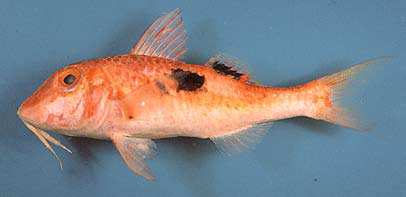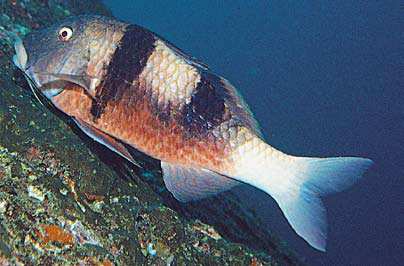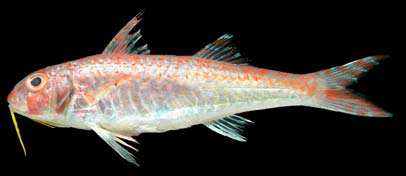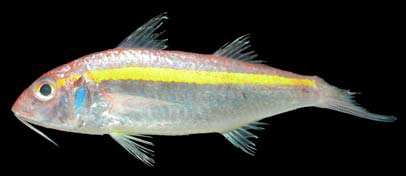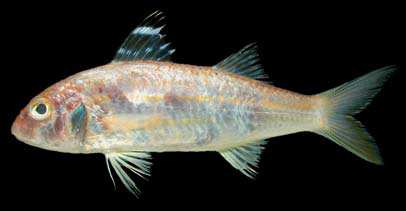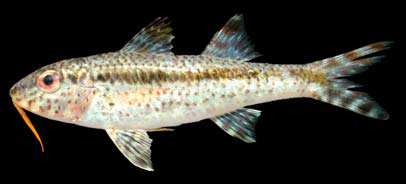MULLIDAE
Goatfishes
By Hisashi Imamura, Ukkrit Satapoomin, and Seishi Kimura
|
Body moderately elongate and somewhat compressed (size to 50 cm). Mouth low on head; lower jaw inferior; two long unbranched barbels on chin; a single flat spine posteriorly on opercle; margin of preopercle smooth. Two well-separated dorsal fins, the first with VII-VIII slender spines; the second fin with 9 soft rays (first unbranched); anal fin with I spine and 6-7 soft rays; caudal fin deeply forked; pectoral fins with 13-18 soft rays; pelvic fins with I spine and 5 soft rays. Scales finely ctenoid; lateral line complete, following the contour of back, with 27-38 pored scales. Color: ground color often whitish to light red; most species with distinctive black, brown, red, or yellow markings; median fins often with stripes or oblique bands. Similar families occurring in the area. Polymixiidae: the only other family with a pair of long barbels on chin; the species occur in deep water, about 200-400 m. They are distinguished from the Mullidae by the following combination of characters: a single, unnotched dorsal fin with IV-VI spines; anal fin with III-IV spines; barbels inserted well behind tip of lower jaw. Remarks: Inhabit shallow seas, on open sand or mud bottoms. They are carnivorous, feeding on a wide variety of small animals, especially crustaceans and worms. The barbels, with chemosensory receptors, are actively moved over or into the sediment to find food organisms. |

|
|

